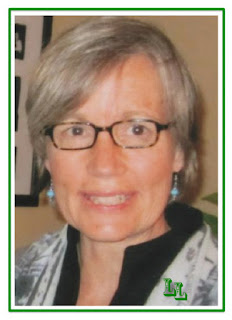Laurie Lawlor is the author of the new children's book Super Women: Six Scientists Who Changed the World. Her many other books include Rachel Carson and Her Book That Changed the World and Muddy as a Duck Puddle and Other American Similes. She lives in Evanston, Illinois.
Q: How
did you come up with the idea for Super Women, and how did you select the six
scientists you included?
A: I
was very interested in examining the lives of women from the same generation--individuals
who were born at the early part of the 20th century when so much overt
prejudice existed for women who wanted to further their science educations or
find jobs in their fields.
These
women were really path breakers. And when we look at their lives we realize how
much the situation for women in the fields of science has changed and how much subtle
prejudice still exists. It's hard to believe that a woman just 50 or 60
years ago could be told: "Sorry, you can't look through this
telescope." or "Sorry, we can't hire you because you'll be too
distracting."
The field of science is fascinating and covers a wide range of
possibilities. I wanted to show women who made a difference in many different disciplines: astronomy, mathematics, archeology, anthropology, marine biology, cartography, and biochemistry.
The field of science is fascinating and covers a wide range of
possibilities. I wanted to show women who made a difference in many different disciplines: astronomy, mathematics, archeology, anthropology, marine biology, cartography, and biochemistry.
My
goal was to provide young readers with a taste of this marvelous variety--and
hopefully inspire them to think about trying new possibilities. To think
BIG, so to speak.
My goal was also to reach out to different parts of the country to show how varied their own backgrounds were as well. I was especially pleased to discover Katherine Coleman Johnson as a remarkable African-American mathematician.
My goal was also to reach out to different parts of the country to show how varied their own backgrounds were as well. I was especially pleased to discover Katherine Coleman Johnson as a remarkable African-American mathematician.
I
did not realize while I was gathering research that she was the inspiration for
the Academy Award nominated film, "Hidden Figures." This was
really a wonderful coincidence.
Q: How
did you research their lives, and did you see common patterns running through
each biography?
A: Each chapter begins with a scene that launches the in-depth profile with action--a situation or scene that I felt really represented the individual's personality and the obstacles she faced.
A: Each chapter begins with a scene that launches the in-depth profile with action--a situation or scene that I felt really represented the individual's personality and the obstacles she faced.
I
love doing research and investigating each woman's life was accomplished by examining
their own oral histories, reminiscences, letters, newspaper articles, and
interviews. I attempted to get in touch with relatives and friends to also
seek out additional photos and insights.
What I discovered for all six was that their families were very
important as support networks.
What I discovered for all six was that their families were very
important as support networks.
All
six were fortunate to have either mothers and/or fathers who were both
responsive and helpful in furthering their educations--whether that meant
helping to pay for their advanced educations or inspiring them when they were
children. In all of their families education was revered. All six
worked incredibly hard and had amazing gifts.
I
think stamina and resilience and the ability to adapt were also key. Luck
played an important role as well.
One
of the historical events that really changed all six of their lives was World
War II, which allowed women (temporarily at least) the opportunity to enter
fields that were considered for men only.
This
was a door that opened and allowed them to find jobs. The great challenge,
of course, was when the war ended, the enlisted men returned to civilian life,
and the women's jobs were on the line--sometimes terminated.
Q: In
what ways have things changed, and remained the same, for women scientists?
A: I
have spoken with many different individuals who are scientists now. The
prejudice they experience is more subtle and much of the challenge has to do
with the hours required and the time commitment required to "compete"
with their male counterparts--an especially difficult situation for young women
interested in having children and families. It's hard for them to take time
off.
The same kind of ability to adapt and survive continues to be
important for women in science decades ago and today.
All six of the subjects I investigated were devoted mentors for women of the next generation. Clearly, women scientists have to cooperate and help one another.
All six of the subjects I investigated were devoted mentors for women of the next generation. Clearly, women scientists have to cooperate and help one another.
Q: What
do you hope readers take away from the book?
A: The
importance of courage, hope, stamina, and inspiration to follow your dream.
Q: What are you working on now?
A: I am working on a nonfiction book about map-making throughout history for young readers and an historical novel for middle grade readers about the Irish potato famine.
Q: Anything else we should know?
Q: What are you working on now?
A: I am working on a nonfiction book about map-making throughout history for young readers and an historical novel for middle grade readers about the Irish potato famine.
Q: Anything else we should know?
A: Never
underestimate the importance of curiosity!
--Interview with Deborah Kalb




No comments:
Post a Comment